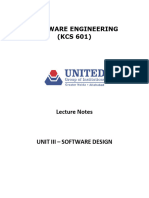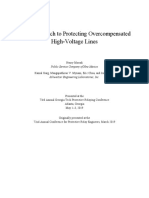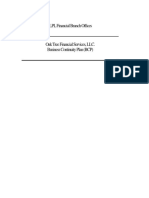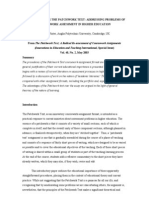0% found this document useful (0 votes)
93 views21 pagesUnit-Iii Software Design:: Elements of A System Architecture: Modules: Components: Interfaces: Data
Uploaded by
gtmtmbaCopyright
© © All Rights Reserved
We take content rights seriously. If you suspect this is your content, claim it here.
Available Formats
Download as PDF, TXT or read online on Scribd
0% found this document useful (0 votes)
93 views21 pagesUnit-Iii Software Design:: Elements of A System Architecture: Modules: Components: Interfaces: Data
Uploaded by
gtmtmbaCopyright
© © All Rights Reserved
We take content rights seriously. If you suspect this is your content, claim it here.
Available Formats
Download as PDF, TXT or read online on Scribd
/ 21
























































































